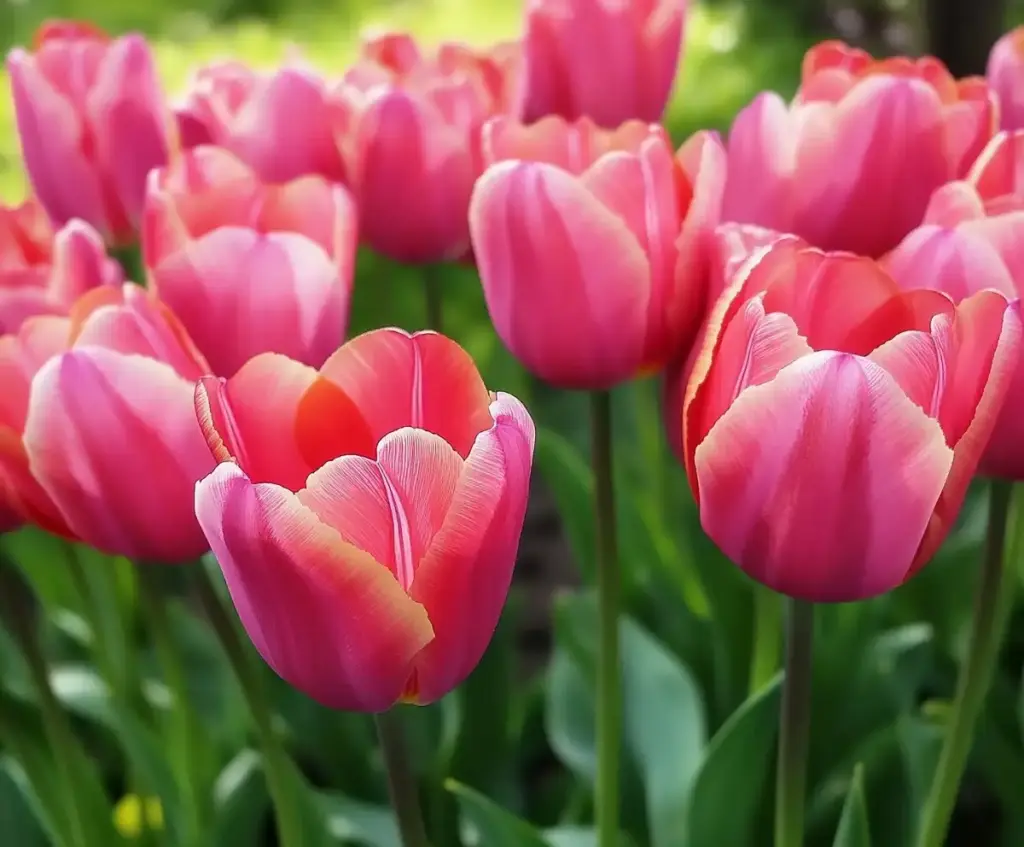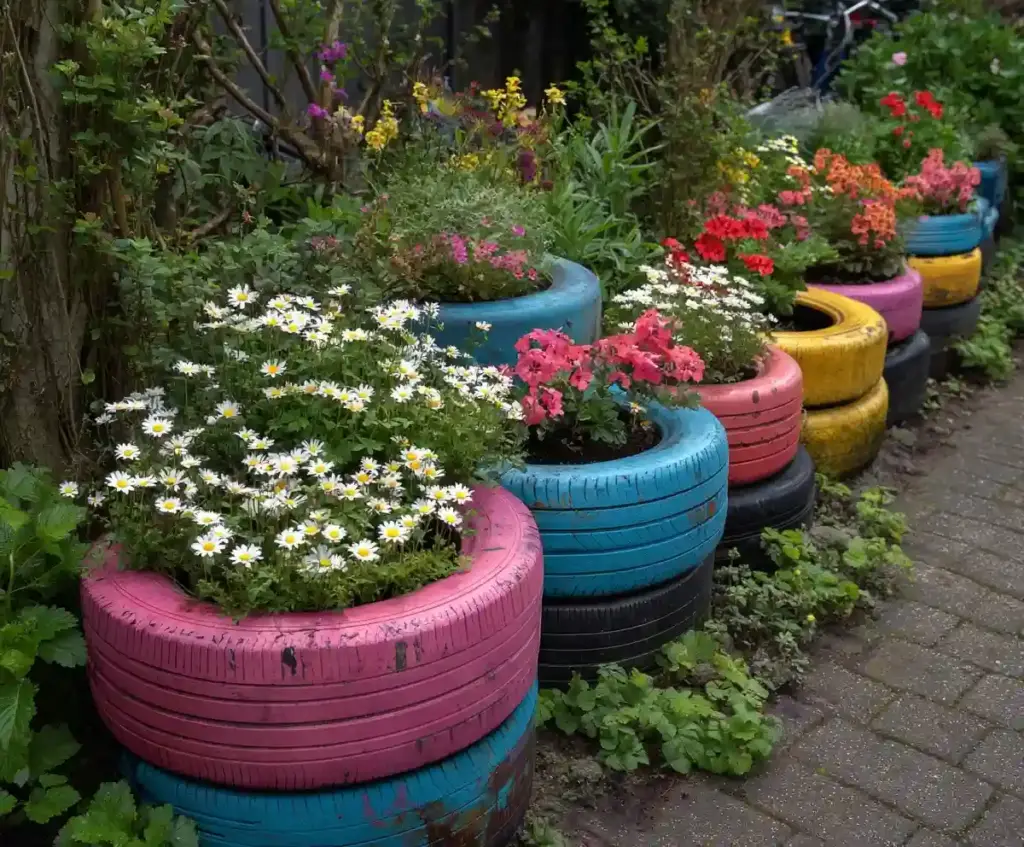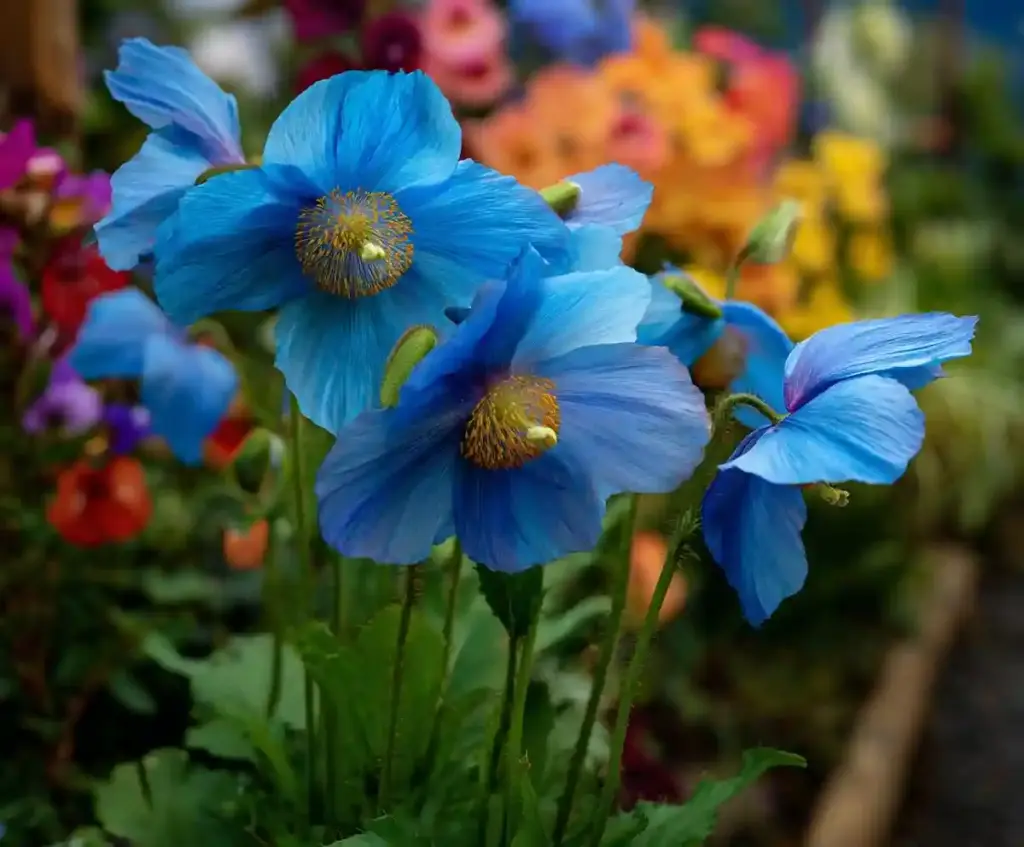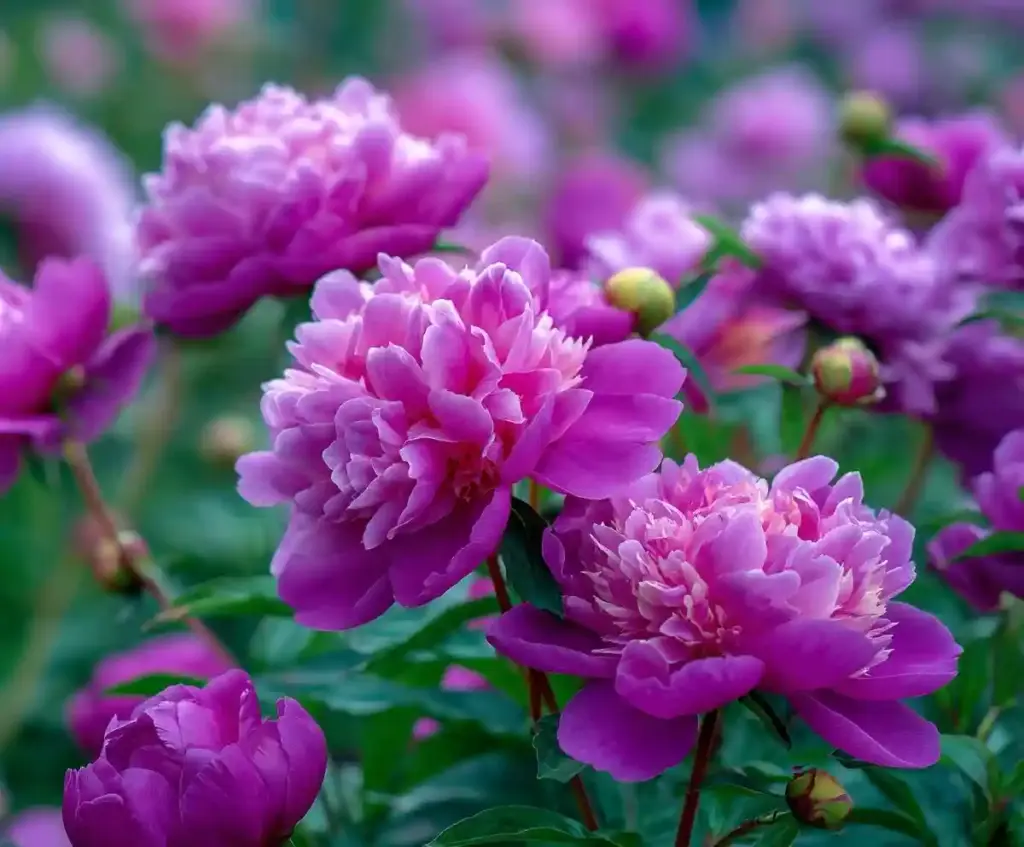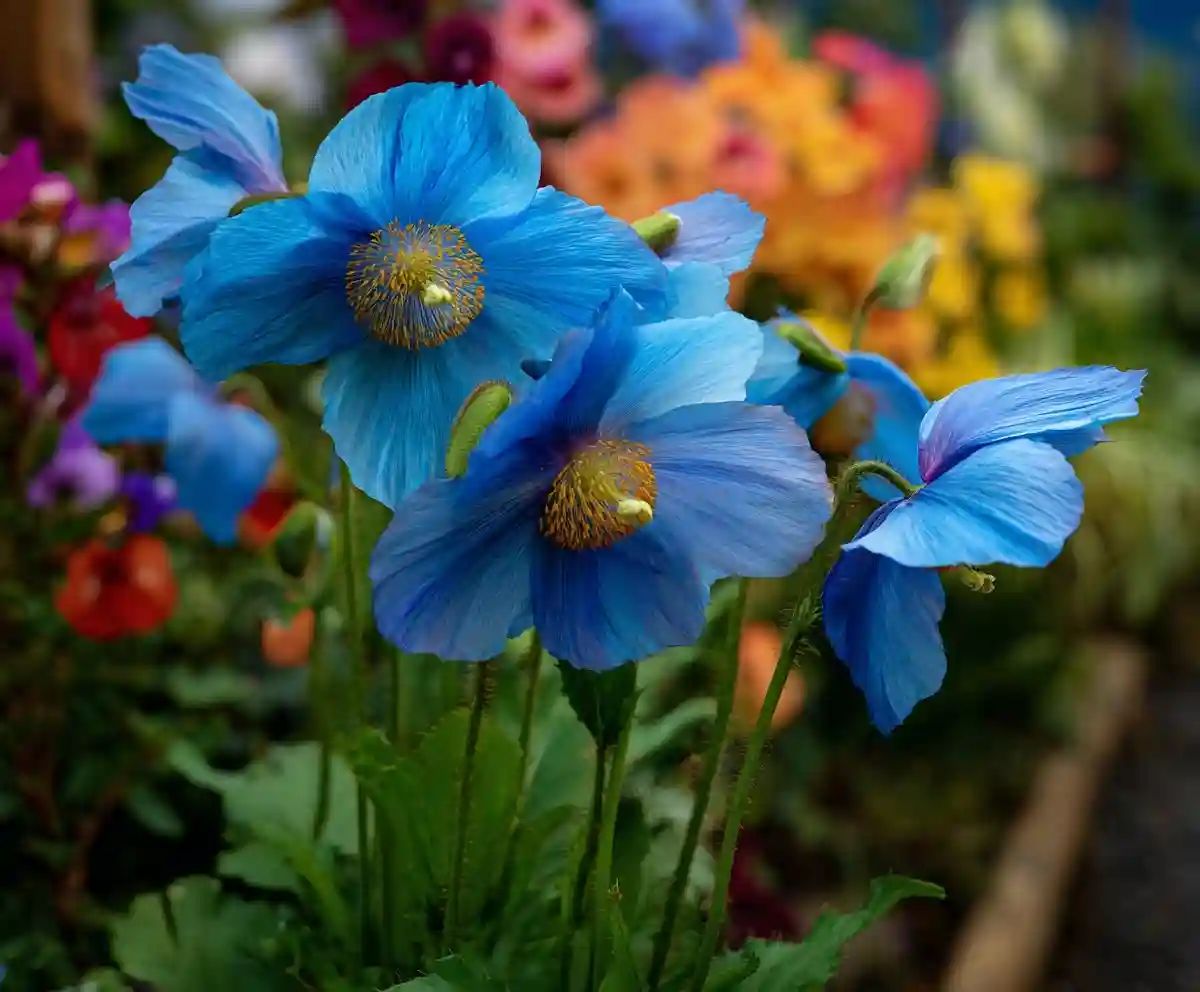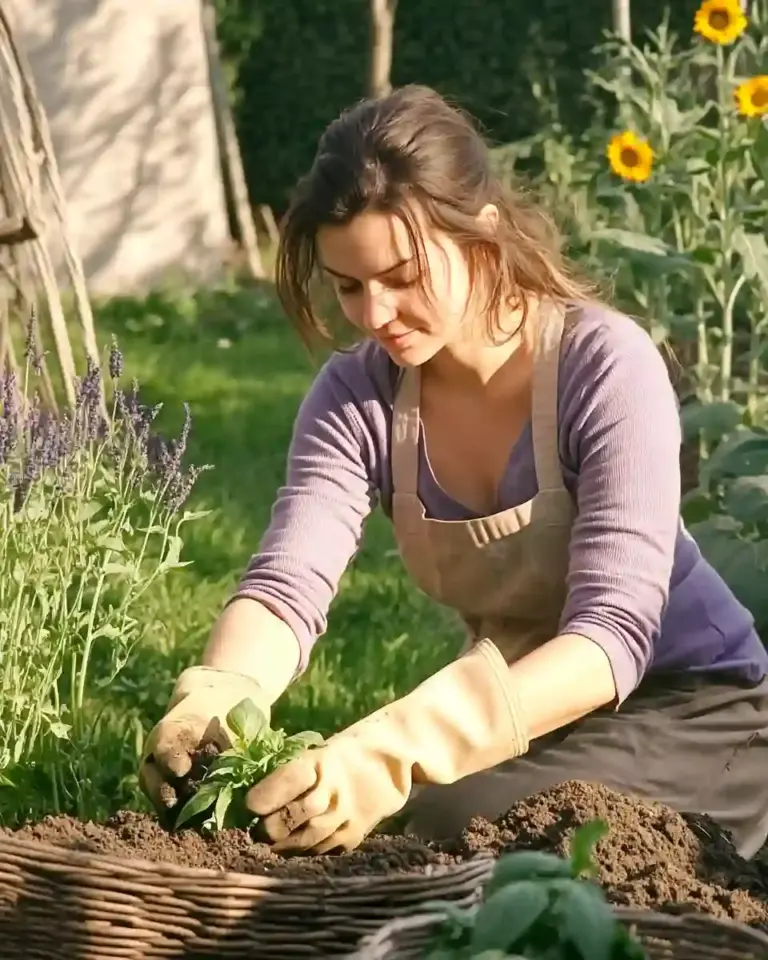Blue flowers garden ideas can transform any outdoor space into a calming, visually striking retreat. Unlike more common garden colors, blue flowers offer a unique palette that soothes the senses and adds depth to the landscape. Whether you’re planning a full garden makeover or simply looking to refresh a corner of your yard, incorporating shades of blue can bring balance and tranquility. From tall spires to ground covers, containers to borders, this guide presents inspiring ways to bring peaceful, blue-toned charm to every corner of your garden—no matter your space, style, or experience level.
Table of Contents
Latest Posts
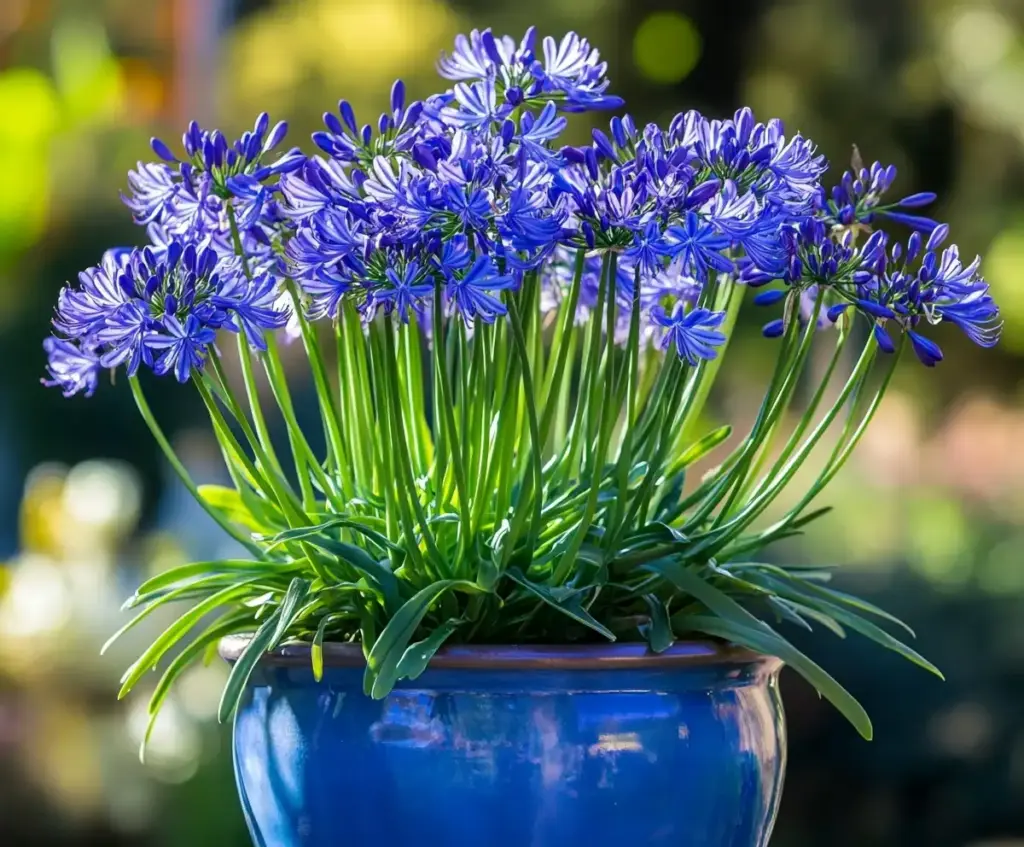
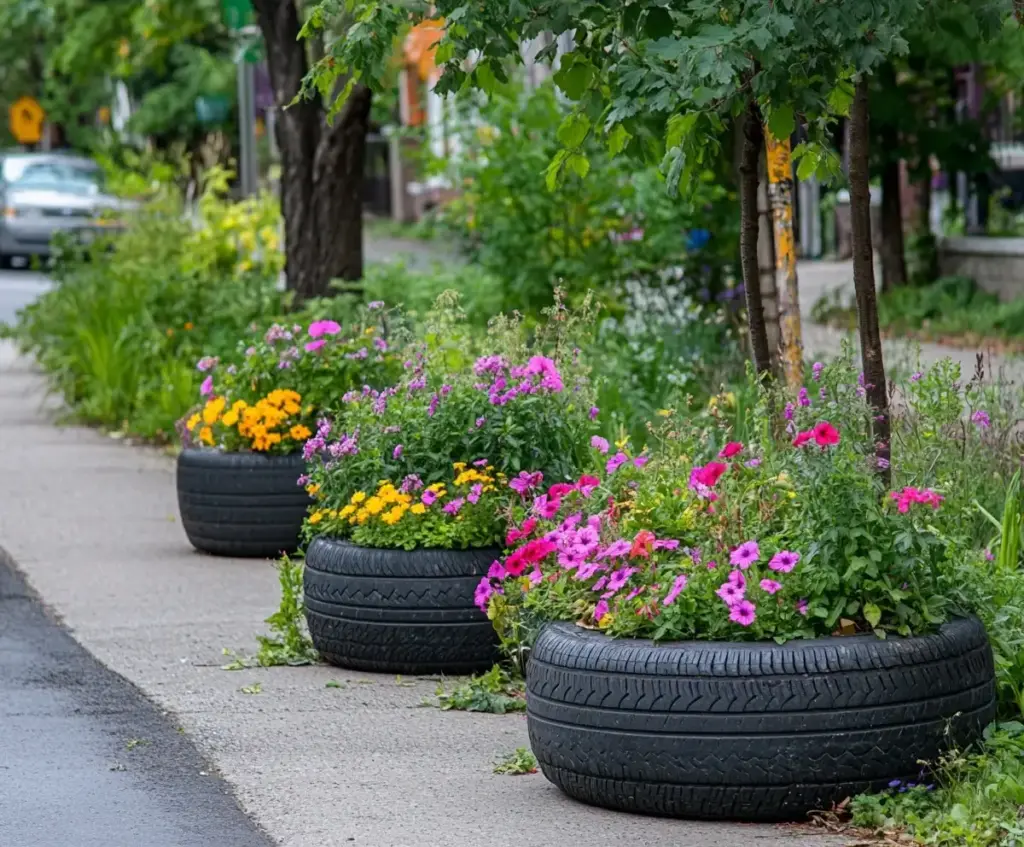
1. Blue Hydrangea Border
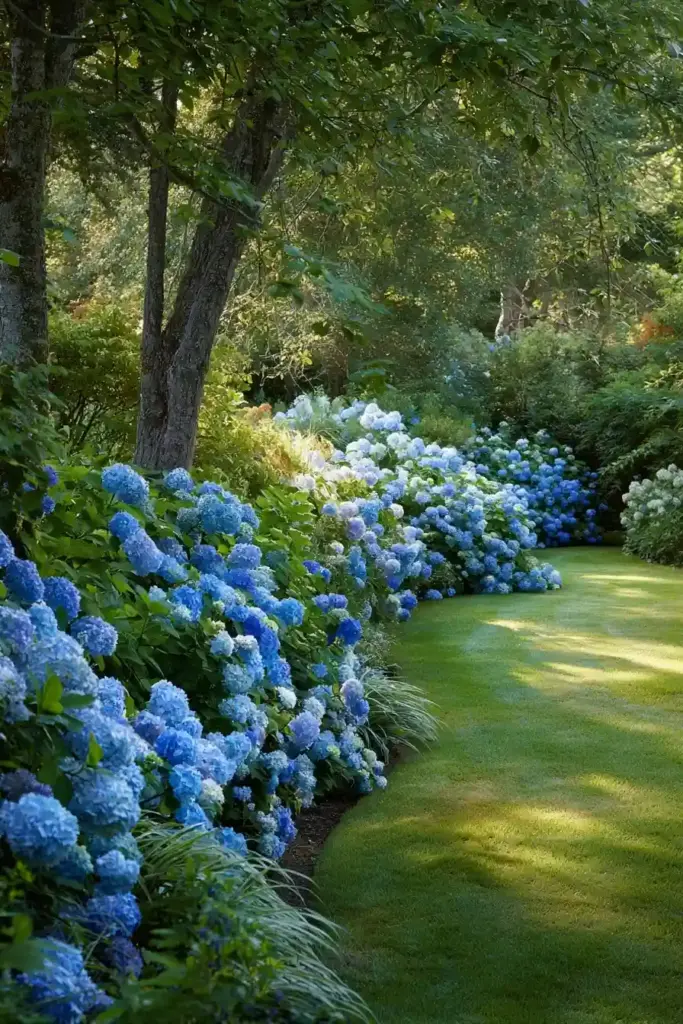
For timeless structure and elegance, a blue hydrangea border is one of the most classic blue flowers garden ideas. These bold blooms create a lush, full display with rounded flower heads that shift in hue depending on soil pH. Ideal for partial shade, hydrangeas bring both texture and color cohesion to your garden’s edge.
Their generous size makes them perfect for defining garden beds or walkways. To maintain their vibrant blue color, keep soil more acidic, and mulch annually with organic material like pine needles or composted leaves. This not only supports color development but also improves moisture retention.
Quick Tips:
- Space hydrangeas 3 to 4 feet apart
- Prune lightly after flowering for shape
- Use aluminum sulfate to deepen the blue tones
2. Morning Glory Trellis
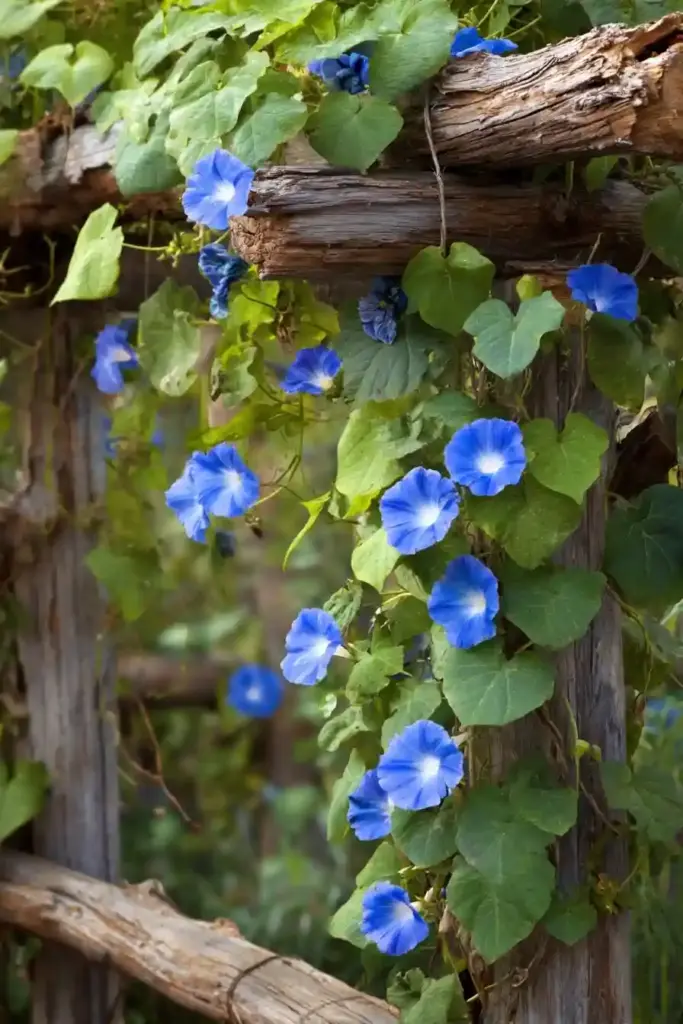
Creating a morning glory trellis adds vertical charm and color to your space—an eye-catching option in any list of blue flowers garden ideas. Morning glories grow rapidly and produce delicate, trumpet-shaped blooms that open each morning, bringing daily interest to your garden.
These fast-climbing annuals thrive in full sun and do best with a sturdy support like a wooden trellis or wire arch. Their twining vines quickly cover fences, pergolas, or even mailbox posts, giving a cottage-garden vibe with minimal upkeep. Choose varieties like ‘Heavenly Blue’ for the richest hues.
Quick Tips:
- Soak seeds overnight before planting to boost germination
- Water regularly but avoid waterlogged soil
- Remove spent blooms to encourage more flowers
3. Bluebell Woodland Path
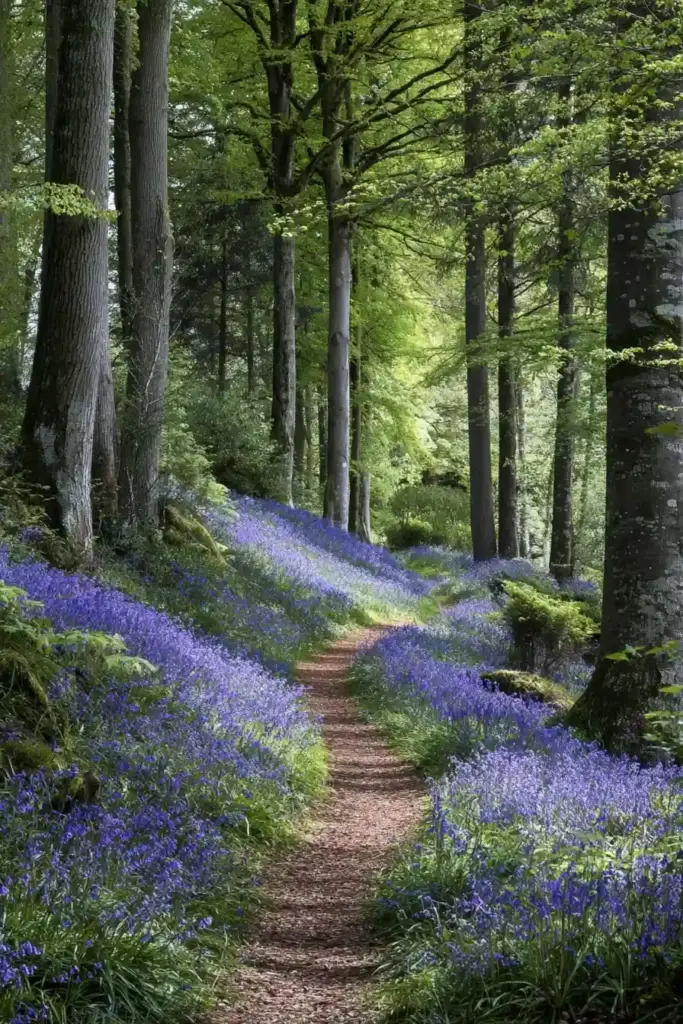
A bluebell woodland path brings a soft, storybook quality to shaded garden areas and is one of the most enchanting blue flowers garden ideas. These bell-shaped perennials bloom in early spring, forming a gentle carpet of blue beneath trees or along winding paths.
Bluebells prefer dappled light and moist, well-drained soil. Once established, they multiply naturally, creating a fuller display each year with minimal maintenance. Their early bloom time also helps signal the end of winter, welcoming the season with delicate color and subtle fragrance.
Quick Tips:
- Plant bulbs in fall for spring blooms
- Allow foliage to die back naturally after flowering
- Pair with ferns or hostas for layered texture
4. Cornflower Wildflower Patch

Adding a cornflower wildflower patch is one of the simplest blue flowers garden ideas for a natural, pollinator-friendly landscape. Also known as bachelor’s buttons, cornflowers produce bright, tufted blooms in vivid blue that thrive in sunny, open areas.
These annuals grow easily from seed and bloom continuously from late spring to early fall. Their wild, informal charm makes them perfect for cottage gardens, borders, or meadow-style planting. Plus, they attract bees, butterflies, and other beneficial insects, helping your entire garden thrive.
Quick Tips:
- Sow seeds directly into prepared soil in early spring
- Thin seedlings to allow air flow and prevent mildew
- Cut regularly to encourage more blooms and prevent self-seeding
5. Delphinium Vertical Accent
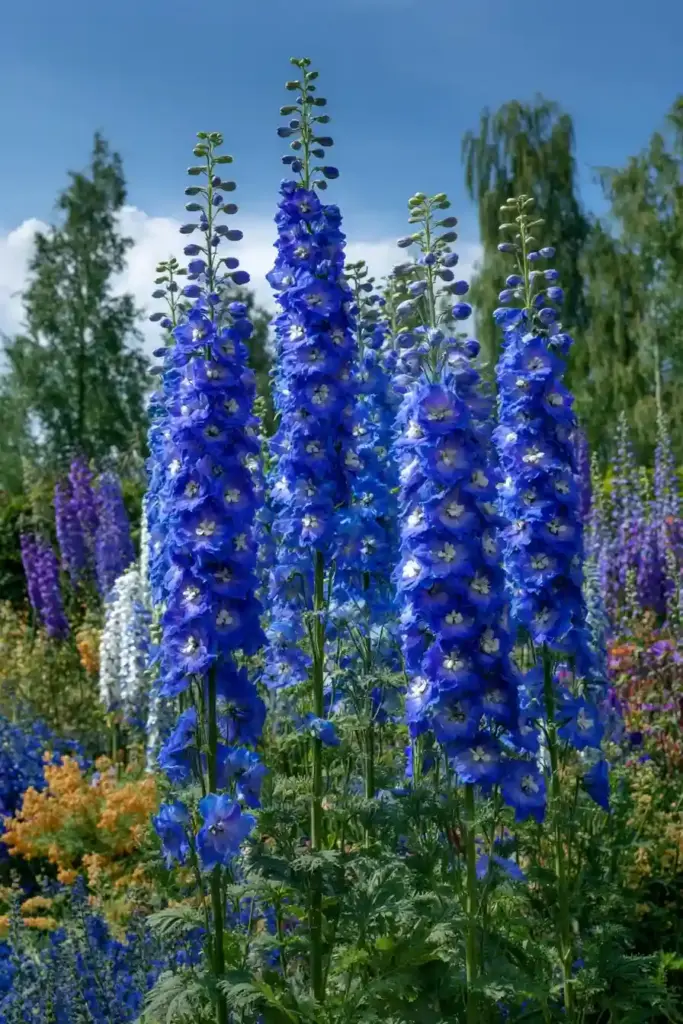
A delphinium vertical accent brings height, drama, and elegance to any garden and is a standout among blue flowers garden ideas. Known for their tall spires covered in densely packed blooms, delphiniums are ideal for the back of flower beds or as a striking focal point.
These perennials thrive in full sun with rich, well-draining soil. Their stately form helps break up horizontal lines in the landscape and adds vertical rhythm. Blue varieties like ‘Blue Lace’ or ‘Belladonna’ offer some of the deepest, most eye-catching shades available.
Quick Tips:
- Stake tall varieties early to prevent flopping
- Deadhead after first bloom for a second flush
- Avoid overly wet conditions to reduce rot risk
6. Blue Salvia Herb Garden

A blue salvia herb garden adds both visual appeal and practical benefits, making it one of the most functional blue flowers garden ideas. Salvia’s spiky blue blooms contrast beautifully with soft-leaved herbs like thyme, oregano, and sage, while also attracting bees, butterflies, and hummingbirds.
This drought-tolerant perennial thrives in full sun and well-drained soil. It blooms from late spring through fall, making it a reliable source of color and pollinator activity all season long. Plus, its fragrant foliage adds another layer of sensory interest to herb beds and borders.
Quick Tips:
- Cut back after flowering to encourage rebloom
- Avoid overwatering—salvia prefers dry feet
- Combine with lavender or rosemary for a Mediterranean look
7. Blue Iris Water Feature
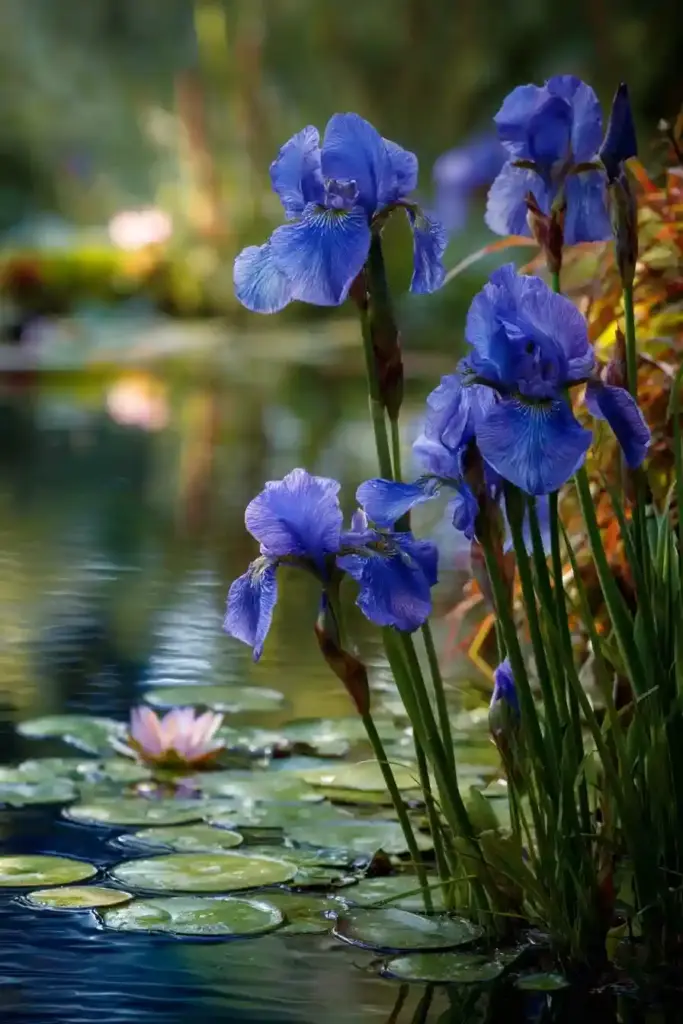
Framing a pond or fountain with blue iris is one of the most elegant blue flowers garden ideas, combining color and movement in a serene setting. Irises flourish in moist soil and are perfect for softening the edges of water features with their tall, sword-like leaves and graceful blooms.
Varieties like Iris sibirica and Iris versicolor bring vivid blue tones that reflect beautifully off the water’s surface. Their upright growth adds vertical interest, while their blooms attract dragonflies and beneficial insects to your garden oasis.
Quick Tips:
- Plant rhizomes in early spring or fall
- Ensure roots are just beneath the soil surface
- Divide clumps every 3–4 years to maintain vigor
8. Forget-Me-Not Ground Cover
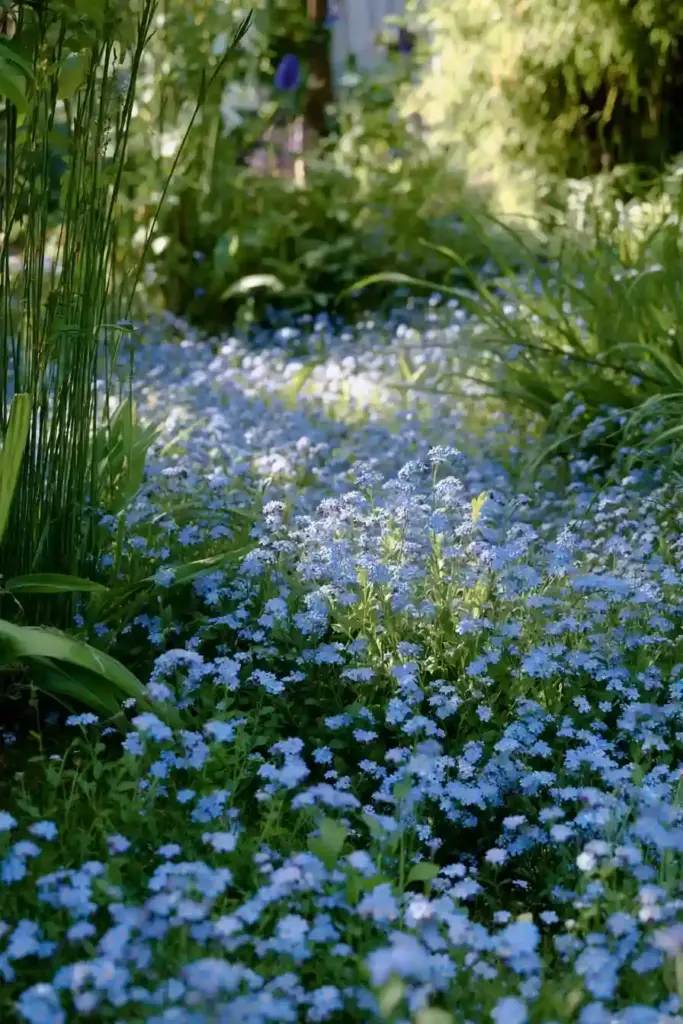
A soft layer of forget-me-nots creates one of the most charming and low-maintenance blue flowers garden ideas for filling bare spots under taller plants or trees. These petite blooms bring a romantic, old-world feel and thrive in shady or semi-shaded areas.
Their self-seeding nature ensures they return year after year, gradually forming a carpet of color in spring. Perfect beneath shrubs or along shady borders, forget-me-nots pair well with ferns, hostas, and hellebores for a layered, woodland effect.
Quick Tips:
- Sow seeds in late summer or early fall for spring blooms
- Thin seedlings to prevent overcrowding and mildew
- Allow plants to go to seed for natural spreading
9. Clematis Archway
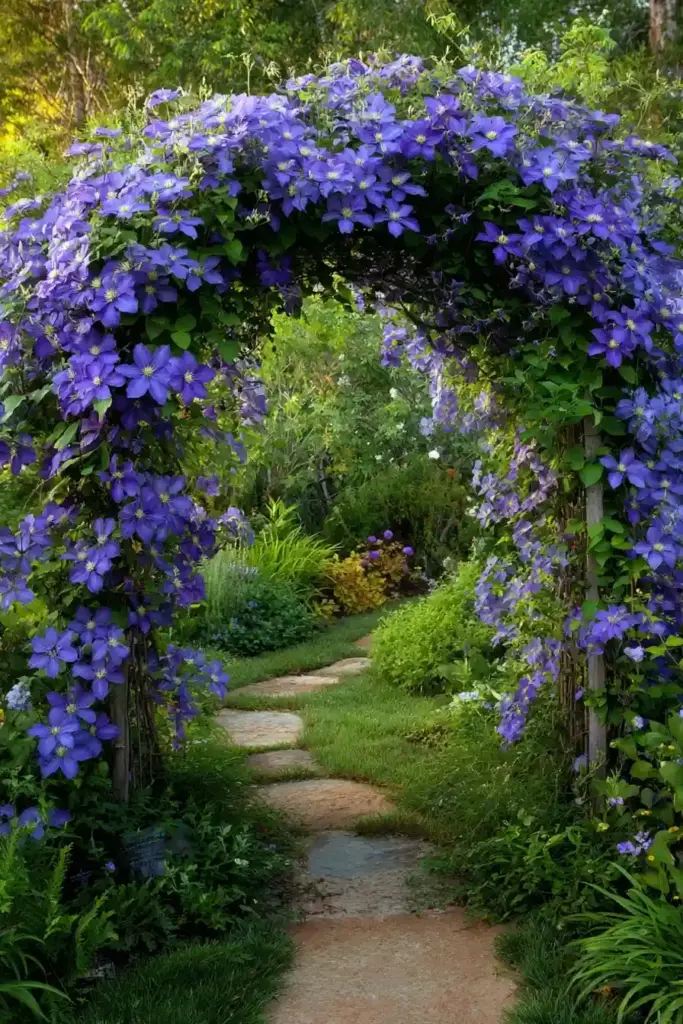
A clematis archway is a captivating way to introduce vertical interest and floral elegance—one of the most dramatic blue flowers garden ideas you can add to your landscape. Clematis vines bloom profusely with star-shaped flowers in rich blue and purple tones, transforming simple arches, gates, or arbors into living entryways.
Clematis prefers its roots cool and shaded, while the vines reach for the sun. Choose varieties like ‘Ramona’ or ‘Arabella’ for long-lasting blue blooms. This flowering vine adds height, movement, and a romantic element that invites you deeper into the garden.
Quick Tips:
- Provide a strong trellis or support structure
- Water regularly and mulch the base to keep roots cool
- Prune according to variety (Group 1, 2, or 3) for best performance
10. Lobelia Hanging Baskets
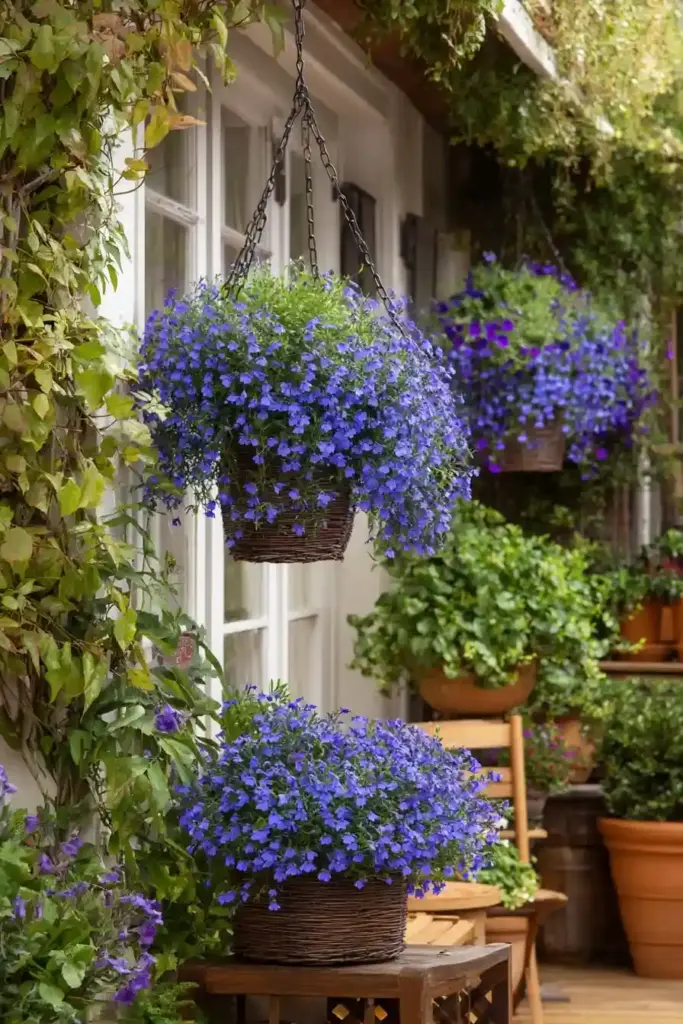
Lobelia hanging baskets offer a burst of vibrant blue from above, making them one of the most versatile and space-saving blue flowers garden ideas. Ideal for patios, balconies, and porches, lobelia’s trailing form spills beautifully over the edges of containers, adding soft movement and rich color.
These annuals flourish in cooler weather and partial sun, producing masses of tiny, electric-blue flowers. They’re especially effective in window boxes, wall planters, or as fillers in mixed hanging arrangements. Regular deadheading keeps them blooming longer into the season.
Quick Tips:
- Water consistently—lobelia dislikes drying out
- Use a high-quality potting mix with good drainage
- Pinch back leggy stems to promote bushier growth
11. Bachelor’s Button Cottage Garden
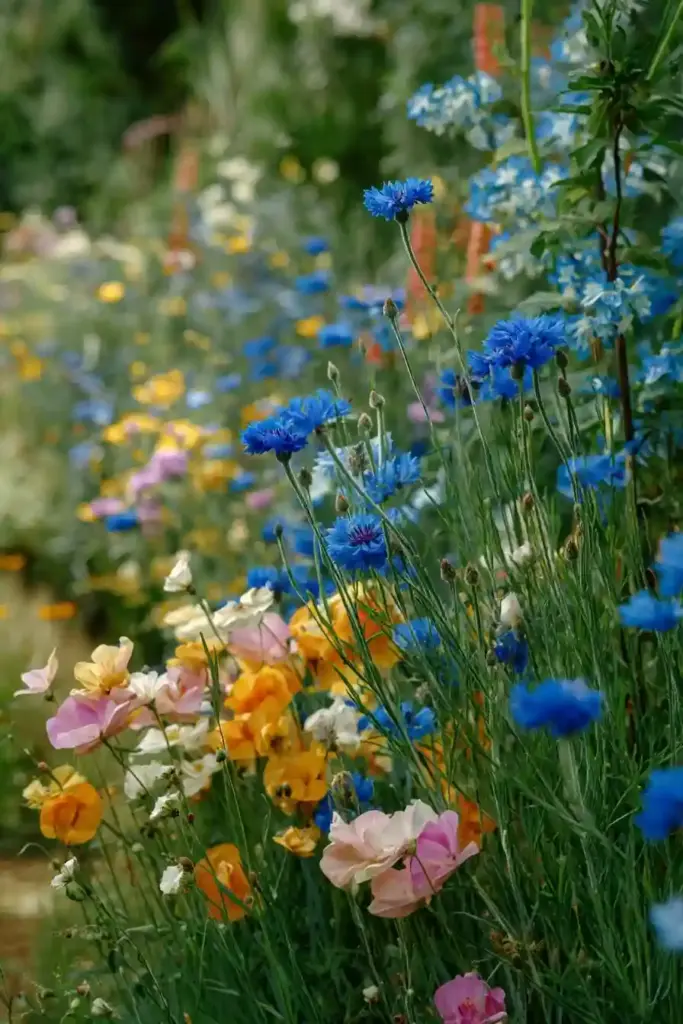
A bachelor’s button cottage garden delivers a nostalgic, free-spirited charm that perfectly complements traditional and informal garden styles. These easy-to-grow annuals, also known as cornflowers, bring cheerful, daisy-like blue blooms that are ideal for mass planting or tucking among other cottage-style favorites.
Their upright habit and silvery-green foliage make them a great filler between perennials or along garden borders. As one of the more carefree blue flowers garden ideas, bachelor’s buttons thrive in poor soil and full sun, requiring very little attention once established.
Quick Tips:
- Direct-sow seeds in early spring or fall
- Harvest blooms regularly for cut flower arrangements
- Let a few flowers go to seed to ensure natural reseeding
12. Agapanthus Patio Pots
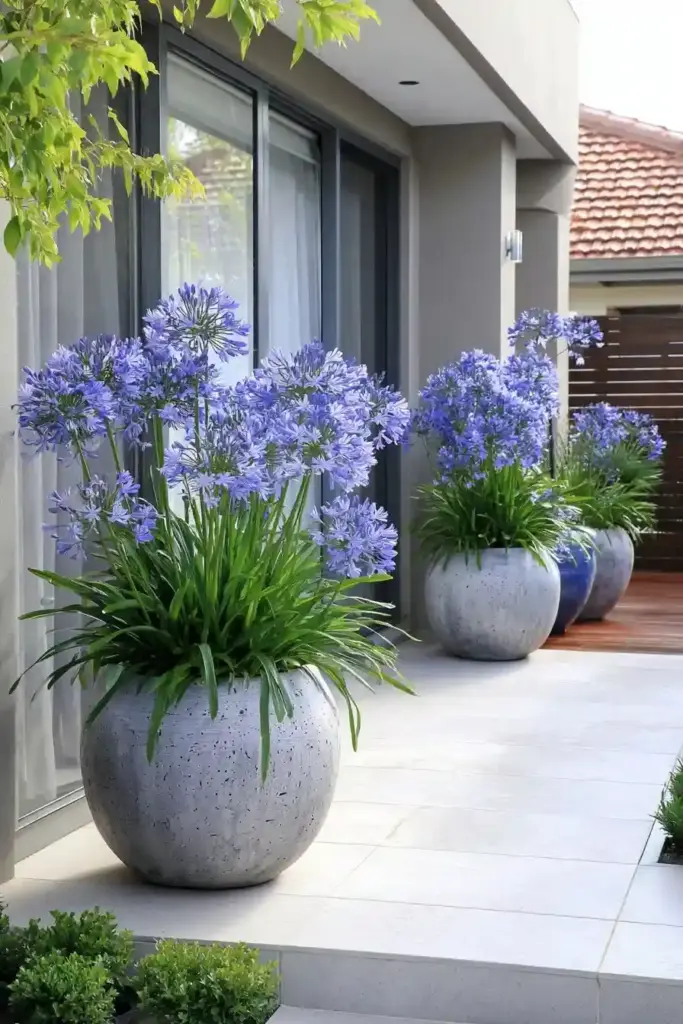
Growing agapanthus in patio pots is one of the most elegant blue flowers garden ideas for container gardeners. Known for their tall stalks topped with spherical clusters of trumpet-shaped blue blooms, agapanthus adds height and architectural form to decks, patios, and terraces.
These sun-loving perennials do exceptionally well in containers, especially in climates where they can be moved indoors for winter. Their bold foliage provides texture even when not in bloom, and the striking flowers attract bees and butterflies through the summer.
Quick Tips:
- Use a deep pot with excellent drainage
- Feed regularly during the growing season for more blooms
- Cut spent flower stalks to encourage new growth
13. Himalayan Blue Poppy Showcase
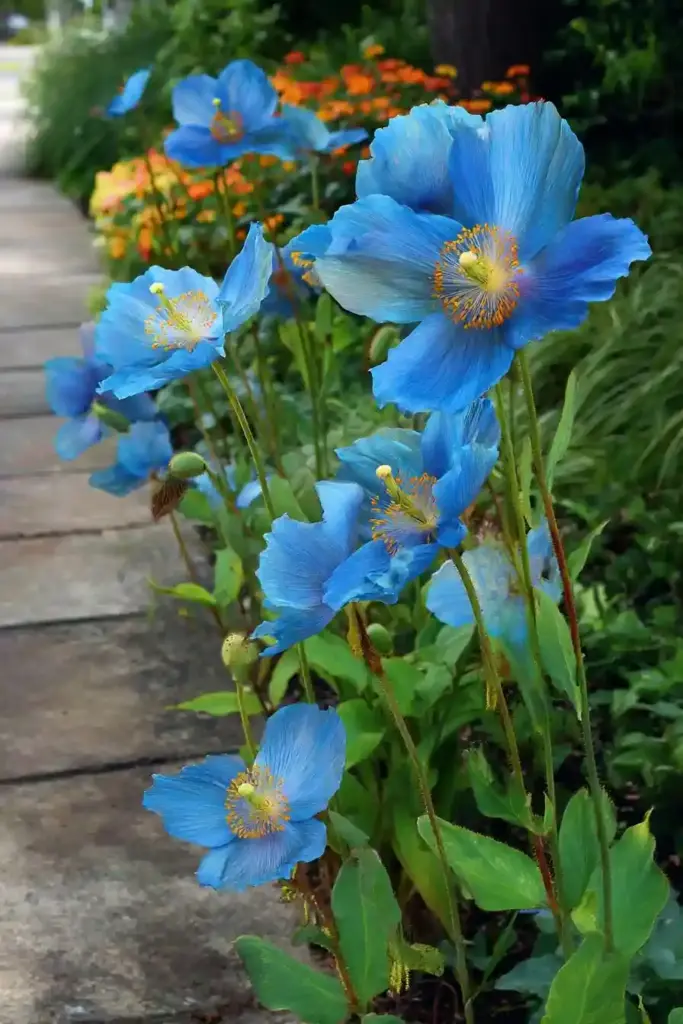
A Himalayan blue poppy showcase creates an unforgettable focal point and stands out as one of the most exotic blue flowers garden ideas. With their large, satin-textured petals and rich turquoise-blue color, these blooms offer a rare visual treat—especially in cooler, moist climates.
These perennials require a bit of care to thrive, preferring acidic, well-drained soil and partial shade. They bloom in late spring to early summer and do best in areas with mild summers and consistent moisture. If conditions are right, the display is nothing short of magical.
Quick Tips:
- Provide protection from strong wind and afternoon sun
- Keep soil consistently moist but not soggy
- Avoid transplanting often—blue poppies dislike root disturbance
14. Blue Fescue Grass Edging
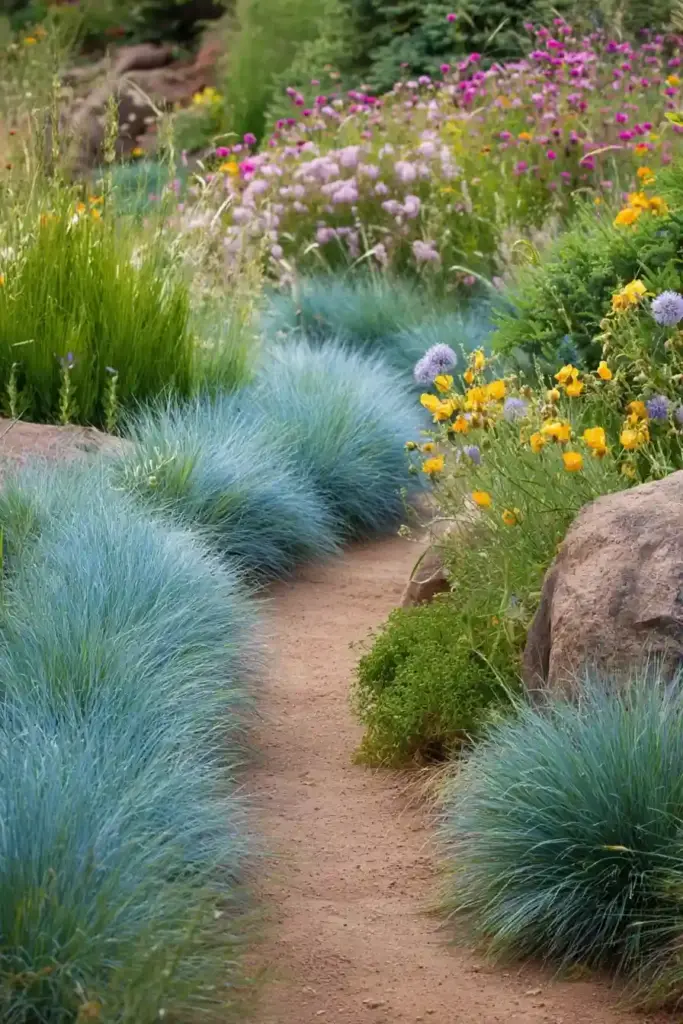
Using blue fescue as garden edging offers a sleek, low-maintenance way to introduce subtle color and texture—an underrated yet effective blue flowers garden idea. This ornamental grass features fine, spiky foliage in silvery-blue tones that holds its shape year-round.
Blue fescue is ideal for defining borders, lining pathways, or adding contrast against lush green perennials. It thrives in full sun and well-drained soil, and its compact size makes it perfect for small spaces or minimalist garden designs.
Quick Tips:
- Cut back in early spring to encourage fresh growth
- Space plants 10–12 inches apart for tidy edging
- Avoid overly rich soil to maintain tight, upright form
15. Plumbago Rock Garden
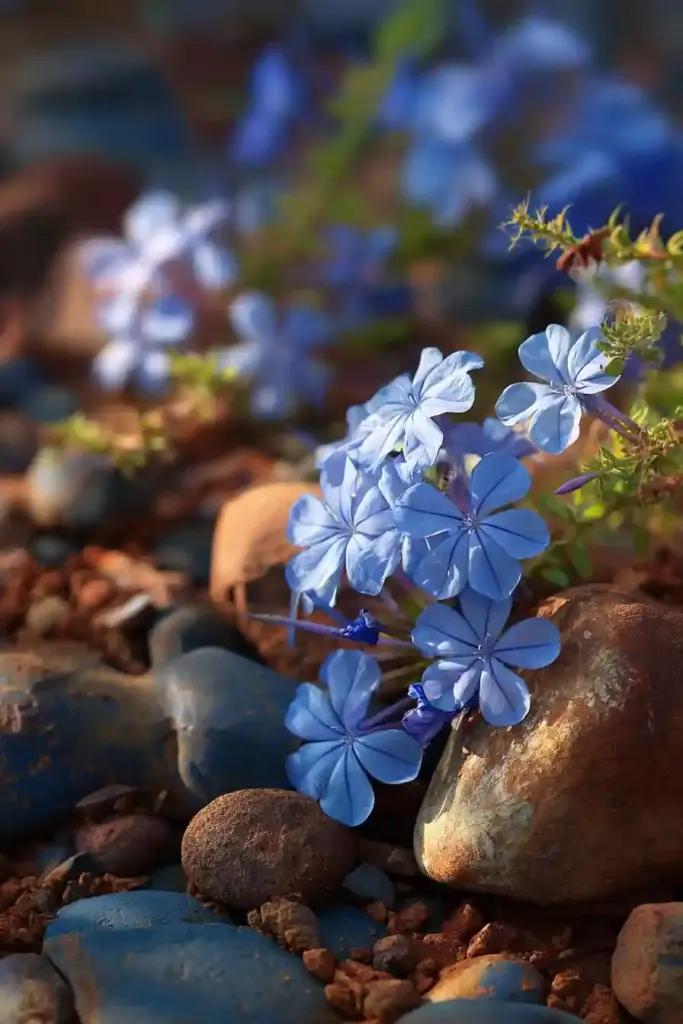
Planting plumbago in a rock garden is one of the most heat-tolerant and visually striking blue flowers garden ideas. With its clusters of sky-blue blooms and sprawling habit, plumbago adds bold color and soft texture to rocky or dry landscapes where many other plants struggle.
This sun-loving perennial thrives in well-drained, even sandy soils, making it a perfect choice for slopes, stone borders, or areas with poor fertility. Its trailing stems spill gracefully over rocks and walls, offering a natural, cascading effect throughout the summer.
Quick Tips:
- Prune in early spring to maintain shape
- Tolerates drought once established
- Combine with succulents or gravel mulches for contrast and ease
16. Love-in-a-Mist Bed
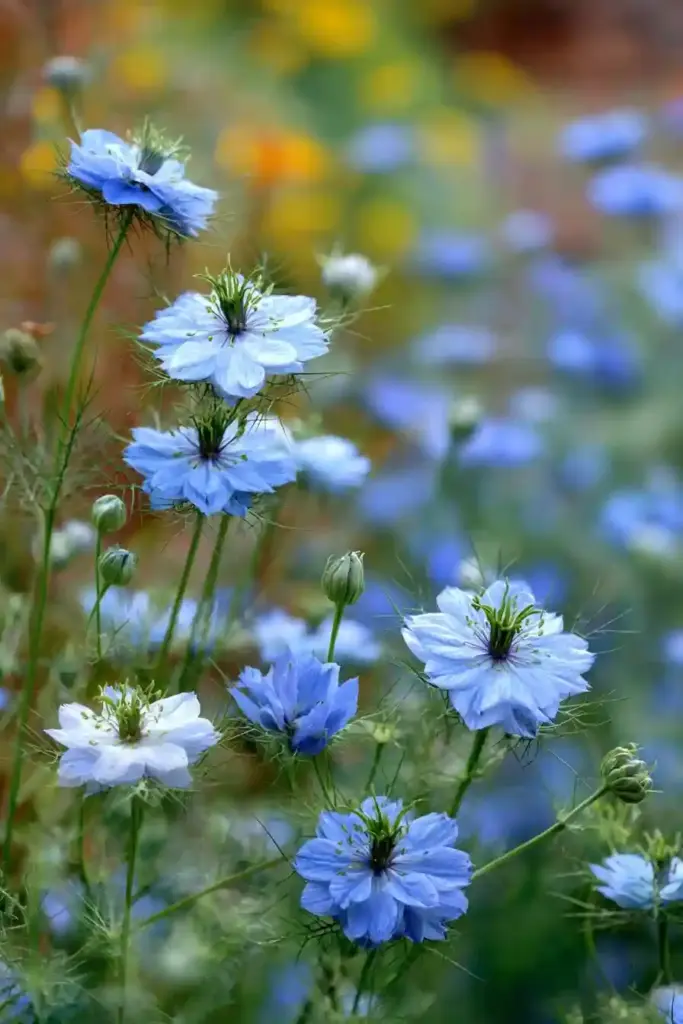
Creating a love-in-a-mist bed brings whimsical charm and soft texture to your garden—one of the most graceful and underrated blue flowers garden ideas. Known for its delicate, airy blooms and finely cut foliage, this annual adds a romantic, cottage-garden feel to any sunny spot.
The star-shaped blue flowers are followed by balloon-like seed pods, which provide continued interest well after blooming ends. Love-in-a-mist self-seeds generously, making it a great low-effort choice for naturalistic beds or filler between perennials.
Quick Tips:
- Direct-sow in early spring; no transplanting needed
- Thin seedlings for better airflow and stronger plants
- Leave seed heads for fall interest or to encourage reseeding
17. Periwinkle Shade Corner
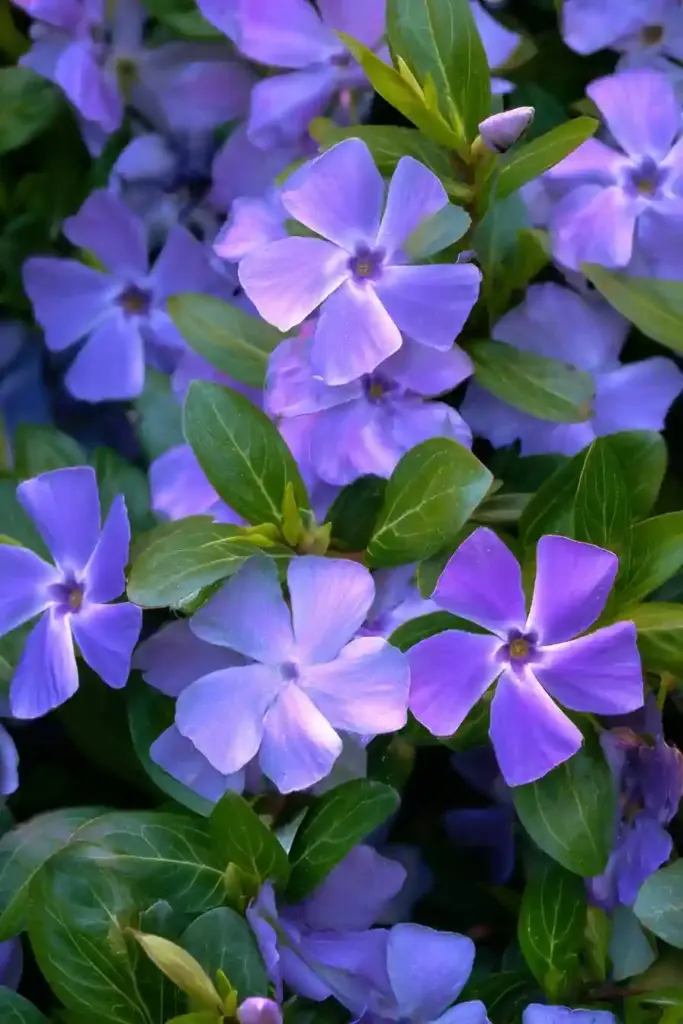
Designing a periwinkle shade corner offers a practical and attractive way to brighten dark garden areas—one of the smartest blue flowers garden ideas for low-light spots. Also called Vinca minor, periwinkle is a hardy ground cover with glossy evergreen leaves and small, starry blue flowers.
It spreads quickly, making it excellent for erosion control or covering bare soil beneath trees and shrubs. Its dense growth habit suppresses weeds naturally, and once established, it requires very little care—perfect for gardeners who want beauty with minimal maintenance.
Quick Tips:
- Plant in early spring or fall for best root development
- Water regularly until established, then reduce
- Trim back occasionally to control spread
18. Veronica Spiked Walkway
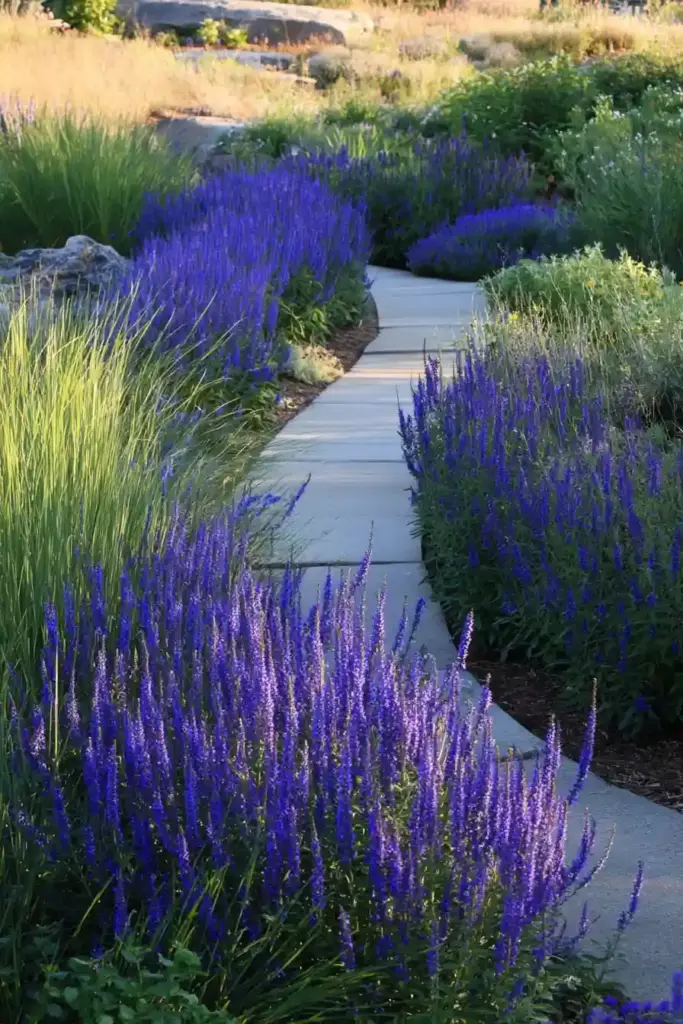
A Veronica spiked walkway adds form, color, and rhythm to paths or borders, making it one of the most structured yet beautiful blue flowers garden ideas. Also known as speedwell, Veronica produces dense, upright flower spikes in various shades of blue that bloom from late spring into summer.
Its neat, vertical shape contrasts beautifully with mounded or trailing plants, giving your garden a well-balanced look. Plus, it’s a magnet for bees and butterflies, adding movement and life along your walkways or front-of-bed placements.
Quick Tips:
- Plant in full sun for best bloom performance
- Deadhead spent spikes to encourage repeat flowering
- Divide every few years to keep plants vigorous
19. Blue Star Creeper Lawn Substitute
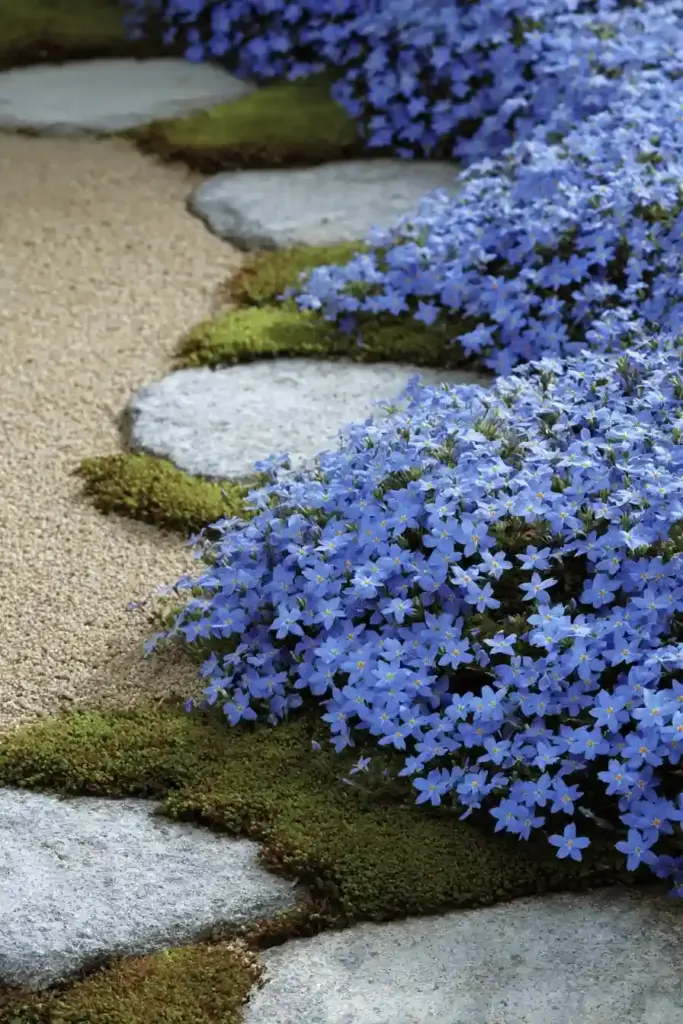
Using blue star creeper as a lawn substitute is one of the most practical and attractive blue flowers garden ideas for small areas or between stepping stones. This ground-hugging perennial forms a dense mat of green foliage, sprinkled with tiny star-shaped blue flowers throughout spring and summer.
It’s durable enough to handle light foot traffic and spreads evenly without becoming invasive. Blue star creeper thrives in both full sun and partial shade, making it ideal for filling gaps in patios, pathways, or low-maintenance lawn alternatives.
Quick Tips:
- Water regularly during establishment, then reduce
- Mow or trim lightly to maintain height
- Avoid overly dry, compacted soils for best results
20. Gentian Alpine Garden

Adding gentian to an alpine garden creates a vivid splash of true blue, making it one of the most dazzling blue flowers garden ideas for compact or high-altitude spaces. Gentians are low-growing perennials that thrive in cool climates and well-drained, rocky soil.
Their rich cobalt blooms often appear in late spring or summer, and their tidy, compact habit makes them perfect for crevices, raised beds, or gravel gardens. Though they require a bit more care, their unmatched color payoff is worth the effort for any blue-loving gardener.
Quick Tips:
- Avoid overly rich soil—gentians prefer lean, gritty mixes
- Water regularly during dry spells, but don’t overwater
- Best suited for zones with cool summers and good drainage
21. Blue Eryngo Drought-Tolerant Spot
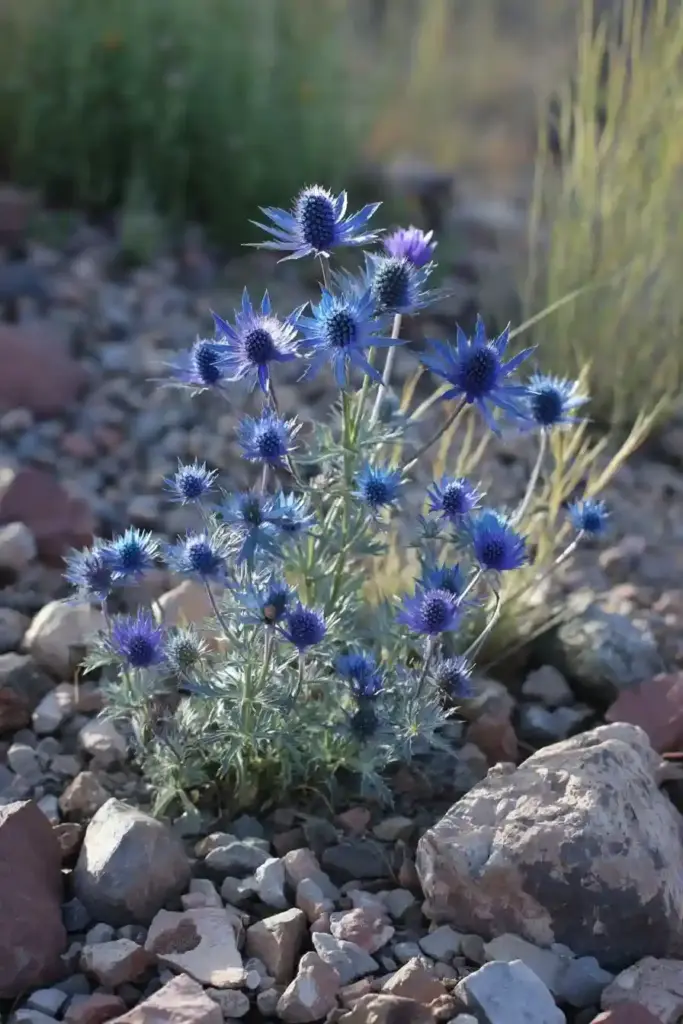
For bold structure and resilience, a blue eryngo drought-tolerant spot is one of the most unique and hardy blue flowers garden ideas. Also known as Eryngium, this spiny perennial produces thistle-like blue blooms with metallic undertones and a sculptural presence.
Blue eryngo thrives in full sun and dry, poor soils, making it perfect for xeriscaping, gravel beds, or areas with limited irrigation. Its architectural form holds up well through summer heat, and the blooms are long-lasting—both in the garden and as dried arrangements.
Quick Tips:
- Space plants to allow airflow and showcase shape
- Avoid rich soil, which reduces blooming
- Cut back in late fall or leave for winter interest
Conclusion
Incorporating blue flowers garden ideas into your landscape brings a calm, soothing atmosphere that stands out from more traditional color schemes. Whether you’re working with a shady corner, a sunny rock bed, or a cozy patio, there’s a blue bloom to match your garden’s needs. From the towering elegance of delphiniums to the delicate charm of forget-me-nots, these ideas provide a balanced mix of beauty, function, and seasonal interest.
Mix different textures, heights, and bloom times to create a layered, harmonious look—and don’t forget to add pollinator-friendly varieties to support a healthy ecosystem. With a little planning, your garden can become a serene escape filled with the peaceful energy only blue flowers can offer.
🌿 Love gardening inspiration? Follow me on Pinterest for bold plant ideas, tips, and seasonal color!
More Posts
